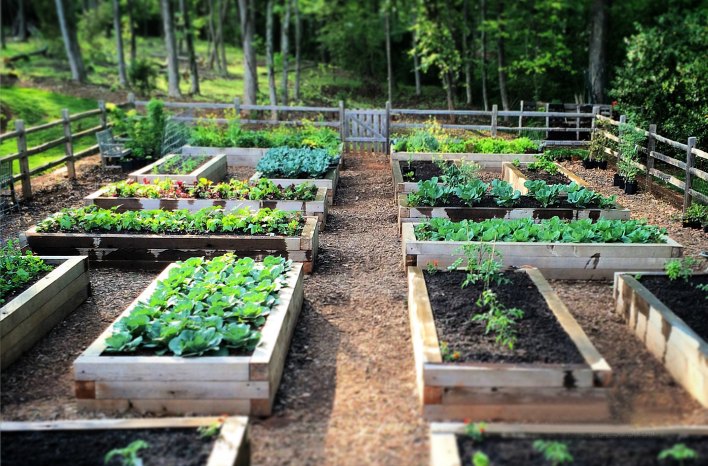Raised garden beds have become a popular option for gardeners due to their versatility, ease of access, and the ability to control soil quality. But when it comes to setting up a raised bed, the base is often overlooked. The right material at the bottom of a raised garden bed can improve drainage, keep weeds at bay, and even add nutrients to the soil. In this article, we’ll explore some creative and effective ideas for what to put at the bottom of your raised garden bed to ensure a healthy and thriving garden.
1. Cardboard or Newspaper: A Weed Barrier with Benefits
One of the most common and eco-friendly options for the base of a raised garden bed is cardboard or newspaper. These materials create a biodegradable weed barrier, preventing weeds from growing up into your garden while still allowing water and nutrients to seep through.
- Why it works: Cardboard and newspaper decompose over time, improving soil structure. They’re also easy to find and free, making this a cost-effective option.
- How to use it: Lay several layers of cardboard or newspaper directly on the ground at the base of the bed. Make sure to overlap the edges to block out any gaps where weeds could slip through.
2. Wood Chips or Bark: A Natural Drainage Layer
Wood chips or bark can serve as a natural drainage layer at the bottom of your raised garden bed. As organic materials, they will eventually decompose, adding organic matter to the soil.
- Why it works: Wood chips improve drainage and aeration in your raised bed while simultaneously breaking down over time, enriching the soil with nutrients.
- How to use it: Add a layer of wood chips or bark 2–4 inches thick at the bottom of the bed before adding soil. Keep in mind that wood chips will decompose slowly, so this is a long-term investment in soil health.
3. Gravel or Pebbles: For Enhanced Drainage
Gravel, stones, or pebbles are excellent options for improving drainage at the bottom of your raised bed. These materials create a porous layer that helps prevent water from pooling at the bottom, which can drown plant roots.
- Why it works: Gravel promotes efficient drainage and prevents water from saturating the soil, which can lead to root rot. It’s also a long-lasting solution that won’t break down like organic materials.
- How to use it: Spread a layer of gravel or small pebbles about 1–2 inches thick across the bottom of the bed. This method works particularly well if your garden bed sits on clay soil, which tends to hold onto water.
4. Compost: Boost Your Soil Nutrients
If you want to enrich your soil from the bottom up, consider starting with a layer of compost. Adding compost at the base of your raised garden bed creates a nutrient-rich foundation that will promote strong plant growth as it decomposes.
- Why it works: Compost is full of essential nutrients that plants need to thrive. As it breaks down, it improves soil structure, increases water retention, and enhances soil fertility.
- How to use it: Spread a thick layer of compost at the bottom of your raised bed. As you add soil on top, the compost will gradually integrate, feeding your plants as they grow.
5. Leaves or Grass Clippings: A Layer of Organic Matter
If you have access to fallen leaves or grass clippings, these can be great materials to place at the base of your raised bed. They decompose quickly and help improve soil fertility and water retention.
- Why it works: Leaves and grass clippings break down quickly, adding nutrients and organic matter to the soil. This helps maintain soil health while retaining moisture, especially during dry periods.
- How to use it: Spread a layer of leaves or grass clippings across the bottom of your raised garden bed. Keep the layer around 3–4 inches thick, and avoid using any clippings treated with pesticides or chemicals.
6. Straw or Hay: Mulch and Drainage in One
Straw and hay can be used as both a drainage layer and a source of organic mulch. As they decompose, they add organic matter to the soil, promoting root development and moisture retention.
- Why it works: Straw and hay create pockets for air and water to circulate, improving drainage while also adding a slow-release source of nutrients.
- How to use it: Add a layer of straw or hay to the bottom of your raised bed. Over time, this layer will break down and enrich the soil while helping to prevent compacted soil.
7. Landscape Fabric: A Barrier Against Weeds
For a low-maintenance option, you can place landscape fabric at the bottom of your raised garden bed. It creates a long-lasting barrier against weeds without decomposing.
- Why it works: Landscape fabric prevents weeds from growing into your bed while allowing water and nutrients to pass through. It’s a durable and effective option that lasts for many years.
- How to use it: Lay the fabric across the bottom of the bed before adding soil. Be sure to secure the edges to prevent it from shifting as you fill the bed with soil and plants.
8. Rotten Logs or Branches: Hugelkultur Method
For a more unconventional but highly beneficial option, consider using old, rotting logs or branches in a technique known as Hugelkultur. This method involves placing logs or other large organic materials at the base of the raised bed to create a natural composting process.
- Why it works: Logs and branches decompose slowly, providing a long-term source of nutrients for plants. As the wood breaks down, it retains moisture, reducing the need for frequent watering.
- How to use it: Place a layer of old logs, branches, or other large organic materials at the bottom of the bed. Fill in gaps with smaller branches, leaves, or compost before adding soil.
Conclusion
The base of your raised garden bed plays a crucial role in the success of your plants. Whether you opt for biodegradable materials like cardboard or organic options such as compost, choosing the right base can improve drainage, enrich the soil, and keep weeds at bay. By considering the specific needs of your garden and experimenting with different materials, you can create a thriving garden environment from the ground up.


